Equities
Global equities (-0.3%) declined in April, culminating in a 2.4% loss year to date. Soaring trade tensions heightened economic and monetary policy uncertainty, causing volatility to surge across global financial markets. The US implemented extensive tariffs on nearly all imports and significantly increased levies on Chinese goods by up to 125%, which ignited a global trade war, cast doubt on the US dollar’s reserve status, and stoked fears of recession. US GDP contracted 0.3% in the first quarter, marking the first quarter of negative economic growth since 2022. In contrast, the eurozone’s economy accelerated 0.4% in the same period, although preliminary data for April showed a faltering economic recovery; the HCOB Flash Eurozone Composite PMI fell to 50.1, signaling near-stagnant growth, and business confidence plummeted to its lowest level since November 2022. In response to the worsening outlook, the European Central Bank (ECB) reduced its benchmark interest rate to 2.25%. In Canada, Mark Carney was elected prime minister in a historic resurgence of the Liberal Party, but the party narrowly failed to secure a majority in the House of Commons, winning 168 seats out of the 172 needed for a majority. The Russia/Ukraine conflict intensified amid escalating attacks on multiple fronts, while diplomatic efforts for a ceasefire continued to face significant challenges. Concurrently, the US and Iran engaged in a third round of nuclear talks, addressing technical issues such as monitoring Iran’s nuclear facilities, uranium enrichment levels, and easing US sanctions. Both sides expressed cautious optimism for an agreement. Oil prices ended the month sharply lower amid accelerated oil production hikes by OPEC+ and fears that the trade war will hinder global economic growth.
US
US equities (-0.7%) ended lower in an exceptionally volatile month. Stocks plummeted after President Trump announced a minimum 10% tariff on almost all imported goods starting on April 5, with even higher tariffs on many countries taking effect soon after. Markets subsequently recouped most of their losses after many of the larger tariffs were paused for 90 days and as China and the US signaled a willingness to engage in trade negotiations. Nevertheless, uncertainty disrupted capital spending plans and weighed heavily on business and consumer sentiment. The S&P Global Flash US Composite Purchasing Managers’ Index (PMI) in April indicated that US business activity expanded at the slowest pace since 2023 amid mounting inflation pressures. US Federal Reserve (Fed) Chair Jerome Powell indicated that the economy remains healthy but also warned that the larger-than-expected increase in tariffs presents a challenge to the Fed’s objectives of full employment and stable prices. According to FactSet, of the 72% of companies in the S&P 500 Index that had reported first-quarter earnings, the blended year-over-year earnings growth for the index was 12.8%, surpassing expectations and above the 10-year average earnings growth rate of 8.9%.
Economic data released during the month was mixed and began to reflect rising economic uncertainty from tariffs. The labor market was largely stable in March; the unemployment rate barely rose; nonfarm payrolls grew more than expected at 228,000, and layoffs remained relatively subdued. US job openings slipped to their lowest level since September, while average hourly earnings climbed at a solid monthly pace but decelerated on an annual basis. Consumers spent aggressively in March ahead of anticipated price hikes. Retail sales surged 1.4% — the largest increase in over two years — on broad-based gains across retail categories, notably building materials, cars, and electronic goods. Personal income rose by a healthy 0.5% and consumer spending increased by a solid 0.7%, although approximately half of the consumption gain came from higher spending on durable goods, which may have been attributable to front loading ahead of tariffs. Pessimism about the economy and labor market dragged the Conference Board’s Consumer Confidence Index down for the fifth straight month to almost a five-year low. In the housing market, new-home sales surged as buyers rushed to close deals, but housing starts and existing-home sales fell more than expected. Uncertainty about trade policy, building materials prices, and financing weighed on builders, while buyers remained constrained by high mortgage rates and lofty home prices.
The manufacturing sector contracted for the second straight month in April but exceeded forecasts, as the Institute of Supply Management (ISM) Manufacturing Index declined only marginally, to 48.7 in April. In March, the services sector expanded at the slowest pace in nine months, with the ISM Services Index dropping to 50.8, from 53.5. The result was weaker than forecast amid limited growth in new orders and the largest drop in the employment gauge in nearly five years (the same gauge rose sharply a month earlier.) Sentiment among services providers was mixed, but balanced. The NFIB Small Business Optimism Index dropped 3.3 points to 97.4 as the share of business owners expecting better conditions in the next six months fell steeply in the wake of sweeping tariff policies.
Within the S&P 500 Index (-0.7%), six of the 11 sectors posted negative results for the month. Energy (-13.7%) was the worst-performing sector. Health care (-3.8%), materials (-2.2%), and financials (-2.2%) also underperformed. Information technology (+1.6%) was the best-performing sector, led by software (+6.6%) and semiconductors & semiconductor equipment (+1.6%). Consumer staples (+1.2%) also outperformed.
Europe
European equities (-0.5%) declined. According to a preliminary estimate by Eurostat, the eurozone economy grew more than expected at 0.4% in the first quarter, partly driven by a 3.2% temporary growth spurt in Ireland due to a large number of American multinational companies processing non-US revenue through Irish subsidiaries. However, the global trade war dented Europe’s outlook, with activity indicators signaling a slowdown in economic growth. The HCOB Flash Eurozone Composite PMI moderated to 50.1 in April, from 50.9 in March, just above the 50 mark that separates economic expansion from contraction. Notably, Germany fell back into contractionary territory for the first time in four months, and France remained in contraction, with business activity softening at a faster pace. Eurozone employment broadly stagnated as a drop in manufacturing staffing outweighed a modest and slower increase in services sector staffing. Against a backdrop of lackluster economic growth, the ECB cut interest rates for the seventh time since last June. Policymakers signaled more comfort with additional rate cuts due to greater downside risks to growth from tariffs, and ECB President Christine Lagarde struck a dovish tone, highlighting an exceptionally uncertain economic outlook while downplaying inflation concerns. Annual eurozone headline inflation remained at 2.2% in April, and core inflation rose to 2.7%. The US continued to push for a Russia/Ukraine ceasefire but threatened to pull out of talks if there is no progress. First-quarter earnings for companies in the STOXX 600 Index are projected to decrease 1.7% from a year earlier, according to LSEG.
Europe’s manufacturing downturn continued to ease; the HCOB Eurozone Manufacturing PMI in April rose at the fastest pace since March 2022, to 49.0, as factory output expanded at a quicker rate. Input costs retreated for the first time in five months, while output price inflation accelerated to a two-year high but remained modest. Discouragingly, business confidence slid to its lowest level since November 2022. The HCOB Flash Eurozone Composite PMI revealed that services sector activity decreased marginally in April, ending a four-month sequence of growth. Input costs rose sharply, while output prices increased at the weakest pace since last September. The European Commission’s Economic Sentiment Indicator dipped to 93.6 in April; industry confidence was broadly stable, but consumer confidence weakened further.
Germany’s (+2.2%) economy skirted recession with modest GDP growth of 0.2% in the first quarter, thanks to consumption and investment. However, the government downwardly revised economic growth to zero for 2025 as the country’s export-dependent manufacturing sector faces pressure from tariffs. Erratic US foreign policy hurt investor confidence, sending the ZEW Indicator of Economic Sentiment down to its lowest level since July 2023. The UK (-0.8%) economy grew at a 0.5% monthly pace in February, beating expectations and marking the largest monthly expansion since March 2024. However, the S&P Global Flash UK PMI Composite Output Index showed that business activity dropped sharply to a 29-month low, with the services sector falling into contraction and manufacturing activity weakening at the fastest rate in 32 months. In the first quarter, Spain’s (+2.3%) GDP slowed to a still-solid 0.6% pace, while France’s (-1.6%) economy grew only 0.1%.
Pacific Basin
Pacific Basin equities (+1.0%) ended higher. In Japan (+0.4%), inflation in Tokyo accelerated at the fastest pace in two years as consumer prices excluding fresh food rose 3.4% year over year in April, up from 2.4% in March and above the 3.2% consensus forecast. A sharp rise in housing rents likely gives the Bank of Japan (BOJ) greater confidence that inflation is trending sustainably higher. However, the BOJ’s path to policy normalization is complicated by the heightened global economic uncertainty from sweeping US tariffs, and the BOJ is widely expected to pause rate hikes in May to assess the impact of the levies. US tariffs on Japanese imports are among the highest of all US allies and include a 10% universal tariff, a 25% levy on car imports, and an additional 24% tariff (paused for 90 days). Japan and the US subsequently held two rounds of trade talks, with Japan’s government indicating that negotiations are at a preliminary stage. Factory output fell 1.1% in March compared to the previous month, suggesting that manufacturing momentum is slowing as companies navigate uncertainties surrounding US tariffs.
Australia’s (+4.0%) two major political parties campaigned ahead of federal elections in early May, revealing plans to allow residents to tax deduct their mortgages and setting aside billions of dollars to build new houses for first-time homebuyers. Australian regulators closely monitored global financial market volatility amid the new US tariff regime, with money markets anticipating an outsized interest-rate cut by the Reserve Bank of Australia (RBA) in May. However, the RBA expressed caution over future interest-rate cuts during its April meeting but indicated that May would be an “opportune time” to revisit policy settings. Annual core inflation (trimmed mean) accelerated slightly more than anticipated to 2.9% in the first quarter, contrasting with sluggish household spending, which was slightly weaker than expected in February and highlighted a stretched and cautious consumer.
Singapore’s (-1.2%) central bank eased its monetary policy settings for the second time this year and cut its 2025 economic growth forecast to 0% – 2%, from 1% – 3%, as US tariffs clouded the outlook for global trade. The bank noted that exporting countries hit by tariffs will face weaker demand and pressure to lower prices against a backdrop of tightening global financial conditions, as markets start repricing risks in the global economy. A preliminary estimate showed that Singapore’s economy grew by 3.8% year over year in the first quarter, slower than growth of 5.0% in the fourth quarter. Core inflation eased more than forecast to 0.5% year over year, its lowest level since March 2021.
Emerging Markets
Emerging markets (EM) equities (-0.2%) fell slightly in April. Asia declined, while Latin America and Europe, the Middle East, and Africa (EMEA) gained.
In Asia (-0.9%), China (-4.5%) declined as an intensifying trade war with the US began to impair economic activity, fueling calls for more stimulus. The US hiked tariffs on Chinese goods to 145%, prompting China to retaliate with 125% tariffs on US imports. Prior to this, the government reported better-than-expected GDP growth of 5.4% year over year in the first quarter. However, more recent data started to reflect the impact of tariffs, with the manufacturing, services, and construction PMIs softening. The official Manufacturing PMI slipped into contractionary territory, falling more than expected to a 16-month low of 49.0 in April. Senior officials outlined plans to support jobs and exporters, hinting at potentially more stimulus and expressing confidence that China can achieve its 5% economic growth target in 2025. Taiwan (-1.3%) declined even as the government unexpectedly raised its 2025 GDP forecast from 3.1% to 3.6%. A surge in technology exports ahead of tariffs boosted first-quarter GDP to 5.37% year over year, well above expectations of 3.4%. The US imposed a 32% tariff on imports from Taiwan, but tariff exemptions on semiconductors provided a temporary reprieve for the country’s chip industry. India’s (+3.6%) central bank cut interest rates by 25 basis points (bps), to 6%, amid lower-than-expected inflation and downgraded its economic growth forecast for the coming year from 6.7% to 6.5%.
In Latin America (+5.1%), Brazil’s (+4.0%) IPCA-15 consumer price index eased to 0.43% in April, down from a 0.64% increase in March. However, annual inflation of 5.49% remains well above the central bank’s 3% target, increasing the prospect of another interest-rate hike in May. February economic data from the central bank beat expectations as the IBC-Br index, a key gauge of GDP, grew 0.4% from January on a seasonally adjusted basis, driven by a 5.6% jump in agricultural activity. Mexico (+8.2%) avoided new baseline US tariffs of 10% that were levied at the beginning of April, although previous tariffs remain in place. The finance ministry lowered its 2025 growth forecast to 1.5% – 2.3%, from a prior estimate of 2.0% – 3.0%, as the economy narrowly avoided recession in the first quarter.
In EMEA (+1.3%), eight OPEC+ members agreed to accelerate oil production hikes by 411,000 barrels per day starting in May, with several members later suggesting that the group accelerate oil output hikes in June as well. Saudi Arabia (-2.1%) declined as oil prices fell to nearly a four-year low, causing budgetary concerns for the country. Driven by strong momentum in non-oil activities, preliminary first-quarter GDP increased 2.7% year over year, down from 4.4% in the fourth quarter. South Africa’s (+5.2%) headline inflation declined to a five-year low of 2.7% year over year in March, but the central bank kept its key interest rate unchanged at 7.5%.
Fixed Income
Stagflation risks intensified as persistent inflation coincided with downgraded economic growth forecasts amid escalating tariff and trade tensions, prompting the Fed to hold rates steady. Volatility spiked on tariff-related headlines and drove Treasury yields lower. Most fixed income sectors generated negative excess returns over duration-equivalent government bonds.
US economic data presented a mixed picture. Labor market conditions remained resilient, with nonfarm payroll gains exceeding expectations. Retail sales and personal spending increased as consumers front-loaded purchases ahead of expected tariff-related price hikes. Durable goods orders surged, driven by strong demand for commercial aircraft. However, consumer and small-business sentiment declined, industrial production softened due to weaker utilities output, and existing-home sales posted their largest drop since 2022. Eurozone retail sales edged higher in February, but consumer confidence faltered amid escalating concerns over global trade. A slight rise in Germany’s IFO Business Climate Index was supported by improved sentiment in services and construction, even as the manufacturing outlook waned. The UK’s service and composite PMI readings dropped below expectations, reflecting subdued demand, although inflation eased modestly, and industrial output rebounded. China’s inflation remained weak with further declines in both the CPI and PPI. Japan’s industrial production rose sharply, led by electronic components, and the composite PMI moved back into expansion, supported by services growth. Canadian manufacturing activity stayed in contraction, retail sales declined, and inflation eased further.
The Fed held interest rates stable, while the ECB and the Reserve Bank of New Zealand cut rates by 25 bps. Most other major central banks left their policy rates unchanged.
Most global sovereign yields fell. The US Treasury market was volatile due to tariff-related headlines and concerns about political pressures on the Fed. Later in the month, a more conciliatory US stance on tariffs and a retraction of President Trump’s comments about firing Jerome Powell helped to calm bond yields. Despite the risk of higher inflation, markets anticipate four rate cuts from the Fed this year, driving short-term yields lower and a modest steepening in the US yield curve. In Europe, German bund yields fell sharply across key tenors due to a dovish ECB and trade tensions. A stronger euro, weaker commodity prices, and softer economic growth increased the likelihood of additional ECB rate cuts. UK gilt yields edged lower, with declining March inflation and weaker activity data likely paving the way for a Bank of England rate cut in May. In APAC, the BOJ maintained its policy rate but halved its 2025 GDP growth expectations amid concerns about US tariffs, driving yields lower. In the dollar bloc, Australian government bonds rallied in line with market sentiment around US tariffs, while Canadian bond yields edged higher, led by the long end of the curve. EM bond markets rallied, supported by inflows from investors redirecting their investments away from US bonds following the “Liberation Day” announcement. The Bloomberg TIPS Index delivered a total return of 0.12%, and the 10-year breakeven inflation rate decreased by 13 bps to 2.24% during the month.
Global credit underperformed duration-equivalent government bonds due to widening spreads. In securitized sectors, agency mortgage-backed, commercial mortgage-backed, and asset-backed securities underperformed duration-equivalent government bonds. Within EM, local markets debt (3.25%) outperformed external debt (-0.22%), in US-dollar terms. Spread widening negatively impacted external debt performance, while declining short- and intermediate-term US Treasury yields provided a boost. EM currencies’ appreciation and positive EM rates further enhanced local markets’ performance.
Currencies
The US dollar continued to depreciate against developed market peers as investor confidence in the US economic outlook deteriorated amid tariff concerns. Within the G10, perceived safe-haven currencies such as the Swiss franc and Japanese yen rose sharply, while the euro also benefited from waning confidence in US assets. Commodity-linked currencies like the New Zealand dollar and Australian dollar appreciated after the US announced a 90-day pause on reciprocal tariffs. In EM, performance was mixed. In Latin America, the Mexican peso appreciated due to a temporary exemption from US tariffs. The South African rand depreciated amid domestic political tensions and fears about the impact of tariffs on the economy.
Commodities
Commodities (-8.4%) fell sharply in April. Energy and industrial metals detracted from returns, while precious metals and agriculture & livestock contributed positively.
Within energy (-16.2%), US natural gas (-21.3%) plunged on the back of record-high production levels, especially in the Northeastern US and Texas, even as underground storage is about 4% below its five-year average. Additionally, milder April weather reduced heating demand, further weighing on natural gas prices. Crude oil (-17.5%), gasoline (-11.2%), gas oil (-11.1%), and heating oil (-10.0%) sank as Saudi Arabia pushed for a significant increase in OPEC+ production starting in May. Additionally, the trade war negatively impacted the broader economic climate, with cutbacks in consumer travel plans reducing the demand for oil.
Industrial metals (-5.4%) fell. The base metals complex was pressured by weaker Chinese manufacturing data and the escalating trade war between China and the US, which hurt zinc (-9.3%), copper (-5.4%), aluminum (-5.3%), nickel (-3.2%), and lead (-2.1%). Metals were also impacted by concerns that economic growth will be slow under the weight of higher tariffs, which included 25% US levies on steel, aluminum, and auto parts; significant levies on imports from Mexico, Canada, and China; and looming tariffs on US semiconductor imports.
Precious metals (+4.8%) advanced for the fourth straight month, as the intensifying trade war spurred greater caution among investors and boosted the appeal of gold (+5.7%). Silver (-5.7%) declined on concerns about the industrial demand for the metal due to recession fears.
Agriculture & livestock (+1.7%) ended higher. Cocoa (+13.7%) rallied as the industry faced higher costs due to drought and plant disease. New tariffs are also predicted to raise cocoa prices. Coffee (+6.6%) was bolstered by lower production forecasts in Brazil and Vietnam — the world’s largest coffee producers — due to crop losses from extreme heat and drought. Lean hogs (+3.5%) advanced on reduced feed costs and solid demand. Cotton (-2.1%) ended lower amid a significant decline in the amount of US cotton contracted for export to China this year amid the trade war. Wheat (-4.5%) fell due to favorable weather conditions for sowing spring crops and developing winter crops, especially in the US. Sugar (-7.3%) slid as Brazilian sugar production strengthened.


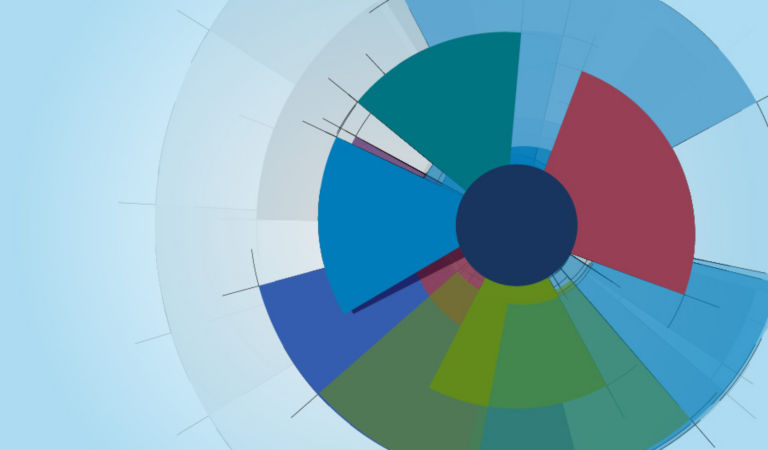




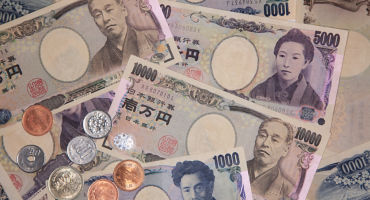
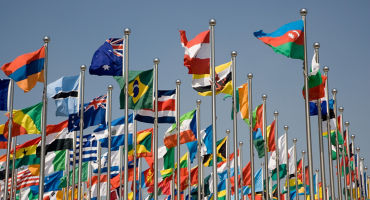


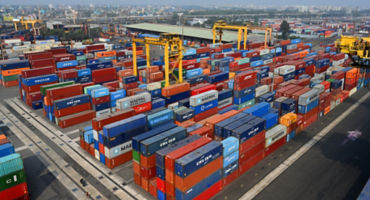

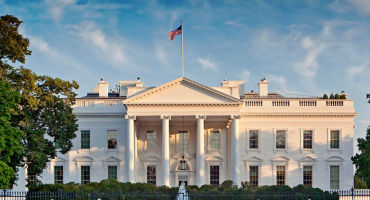

Quarterly Market Review — 1Q25
An update on equity, fixed income, currency, and commodity markets.
By
Brett Hinds
Jameson Dunn